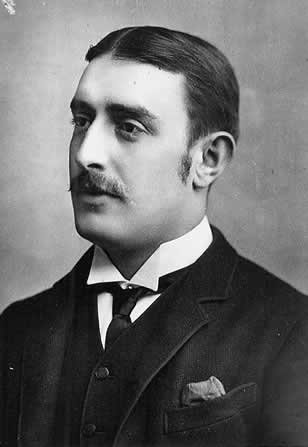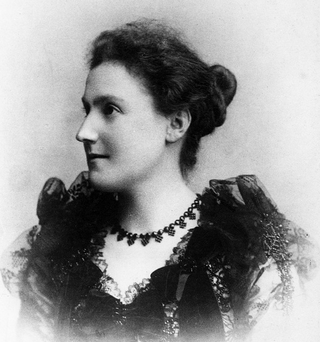William Roy | |
|---|---|
 | |
| Born | 1911 |
| Died | 1977 |
| Occupation | Spiritualist medium |
William Roy (1911-1977) was the pseudonym of William George Holroyd Plowright, a notorious fraudulent medium in the history of British spiritualism. [1] [2]
William Roy | |
|---|---|
 | |
| Born | 1911 |
| Died | 1977 |
| Occupation | Spiritualist medium |
William Roy (1911-1977) was the pseudonym of William George Holroyd Plowright, a notorious fraudulent medium in the history of British spiritualism. [1] [2]
Roy was born in Cobham, Surrey. He married Mary Castle, a nightclub owner, in London when he was seventeen years old. During the 1930s, his wife died and he remarried. He set up in business as a spiritualist medium. Roy's second wife, Dorothy, committed suicide. Three weeks after her death, Roy married Mary Rose Halligan. Roy had rich clients and lived in expensive style. He separated from his third wife in 1956. [2]
Several small biographies have been written about Roy, these appear in Egon Larsen (1966), Simeon Edmunds (1966) and Melvin Harris (2003). [1] [3] [4]

Roy used technical devices for his fraudulent mediumship and employed hidden accomplices. He concealed a microphone and recorded the conversations of the sitters before his séances. [4] Roy was exposed as a fraud in 1955. According to Lewis Spence:
When people wrote to ask if they could attend his séances, Roy researched at the registry of births, deaths, and marriages in order to obtain detailed information about their relatives. When they visited his house for a sitting, they would be asked to leave their bags and coats outside the séance room. These were searched by a confederate for letters, tickets, bills, or other scraps of personal information. All the facts concerning sitters were recorded in a detailed card index system, and cleverly worked into Roy's "psychic" messages during séances. [5]
His "direct voice" mediumship was a clever microphone relaying technique. The "spirit" voices were made in an adjoining room by his accomplice who spoke into a microphone or played tape recordings. [3] The wires from the microphone ran through the wall and under the carpet of the séance room and attached to a hearing aid on Roy's wrist. The hearing aid had been adapted into a miniature speaker. [3]
In 1958, Roy published his confessions on how he had tricked his séance sitters and issued photographs of the trick-apparatus that he had used in the Sunday Pictorial newspaper. These appeared in five installments, titled "A Shocking Confession of How William Roy Cheated His Way to Fame as a Spiritualist Medium". [1]
He admitted that he had earned over £50,000 from his séance sitters. [6] Despite his confessions Roy continued to operate as a fake medium under the name "Bill Silver" until his death. [7]
Roy's apparatus for his fraudulent mediumship is now contained at Scotland Yard, in a museum at the Metropolitan Police Detective Training School. [2]

The Society for Psychical Research (SPR) is a nonprofit organisation in the United Kingdom. Its stated purpose is to understand events and abilities commonly described as psychic or paranormal. It describes itself as the "first society to conduct organised scholarly research into human experiences that challenge contemporary scientific models." It does not, however, since its inception in 1882, hold any corporate opinions: SPR members assert a variety of beliefs with regard to the nature of the phenomena studied.

Spiritualism is the metaphysical school of thought opposing physicalism and also is the category of all spiritual beliefs/views from ancient to modern. In the long nineteenth century, Spiritualism became most known as a social religious movement according to which an individual's awareness persists after death and may be contacted by the living. The afterlife, or the "spirit world", is seen by spiritualists not as a static place, but as one in which spirits continue to evolve. These two beliefs—that contact with spirits is possible, and that spirits are more advanced than humans—lead spiritualists to the belief that spirits are capable of providing useful insight regarding moral and ethical issues, as well as about the nature of God. Some spiritualists will speak of a concept which they refer to as "spirit guides"—specific spirits, often contacted, who are relied upon for spiritual guidance. Emanuel Swedenborg has some claim to be the father of Spiritualism. Spiritism, a branch of spiritualism developed by Allan Kardec and today practiced mostly in Continental Europe and Latin America, especially in Brazil, emphasizes reincarnation.

A séance or seance is an attempt to communicate with spirits. The word séance comes from the French word for "session", from the Old French seoir, "to sit". In French, the word's meaning is quite general: one may, for example, speak of "une séance de cinéma". In English, however, the word came to be used specifically for a meeting of people who are gathered to receive messages from ghosts or to listen to a spirit medium discourse with or relay messages from spirits. In modern English usage, participants need not be seated while engaged in a séance.

The National Laboratory of Psychical Research was established in 1926 by Harry Price, at 16 Queensberry Place, London. Its aim was "to investigate in a dispassionate manner and by purely scientific means every phase of psychic or alleged psychic phenomena". The honorary president was Lord Sands, K.C., LL.D., acting president was H. G. Bois, and the honorary director was Harry Price. In 1930 the Laboratory moved from Queensberry Square, where it had been a tenant of the London Spiritualist Alliance to 13 Roland Gardens. In 1938, its library was transferred on loan to the University of London.

Harry Price was a British psychic researcher and author, who gained public prominence for his investigations into psychical phenomena and exposing fraudulent spiritualist mediums. He is best known for his well-publicised investigation of the purportedly haunted Borley Rectory in Essex, England.

Mediumship is the practice of purportedly mediating communication between familiar spirits or spirits of the dead and living human beings. Practitioners are known as "mediums" or "spirit mediums". There are different types of mediumship or spirit channelling, including séance tables, trance, and ouija.

Eusapia Palladino was an Italian Spiritualist physical medium. She claimed extraordinary powers such as the ability to levitate tables, communicate with the dead through her spirit guide John King, and to produce other supernatural phenomena.

Ectoplasm is a term used in spiritualism to denote a substance or spiritual energy "exteriorized" by physical mediums. It was coined in 1894 by psychical researcher Charles Richet. Although the term is widespread in popular culture, there is no scientific evidence that ectoplasm exists and many purported examples were exposed as hoaxes fashioned from cheesecloth, gauze or other natural substances.

Rudi Schneider, son of Josef Schneider and brother of Willi Schneider, was an Austrian Spiritualist and physical medium. His career was covered extensively by the Journal of the American Society for Psychical Research, and he took part in a number of notable experiments conducted by paranormal researchers/debunkers, including Harry Price, Albert von Schrenck-Notzing and Eric Dingwall. Some of these researchers declared him to be a fraud while others were unable to find evidence of trickery.
The American Society for Psychical Research (ASPR) is the oldest psychical research organization in the United States dedicated to parapsychology. It maintains offices and a library, in New York City, which are open to both members and the general public. The society has an open membership, anyone with an interest in psychical research is invited to join. It maintains a website; and publishes the quarterly Journal of the American Society for Psychical Research.

Eileen Jeanette Vancho Lyttle Garrett was an Irish medium and parapsychologist. Garrett's alleged psychic abilities were tested in the 1930s by Joseph Rhine and others. Rhine claimed that she had genuine psychic abilities, but subsequent studies were unable to replicate his results, and Garrett's abilities were later shown to be consistent with chance guessing. Garrett elicited controversy after the R101 crash, when she held a series of séances at the National Laboratory of Psychical Research claiming to be in contact with victims of the disaster. John Booth, and others, investigated her claims, and found them to be valueless, easily explainable, or the result of fraud.
Gustav Geley was a French physician, psychical researcher and director of the Institute Metapsychique International from 1919 to 1924.

Walter Franklin Prince was an American parapsychologist and founder of the Boston Society for Psychical Research in Boston.

Hereward Carrington was a well-known British-born American investigator of psychic phenomena and author. His subjects included several of the most high-profile cases of apparent psychic ability of his times, and he wrote over 100 books on subjects including the paranormal and psychical research, conjuring and stage magic, and alternative medicine. Carrington promoted fruitarianism and held pseudoscientific views about dieting.

George Valiantine (1874–1947) was an American direct voice medium that was exposed as a fraud.

William Eglinton (1857–1933), also known as William Eglington was a British spiritualist medium who was exposed as a fraud.

Einer Nielsen (1894–1965) was a Danish physical medium and spiritualist.

Francis Ward Monck was a British clergyman and spiritualist medium who was exposed as a fraud.

Rosina Thompson was a British trance medium.

Thomas Everitt (1823–1905) and Mrs Thomas Everitt (1825–1915) were prominent British spiritualists.